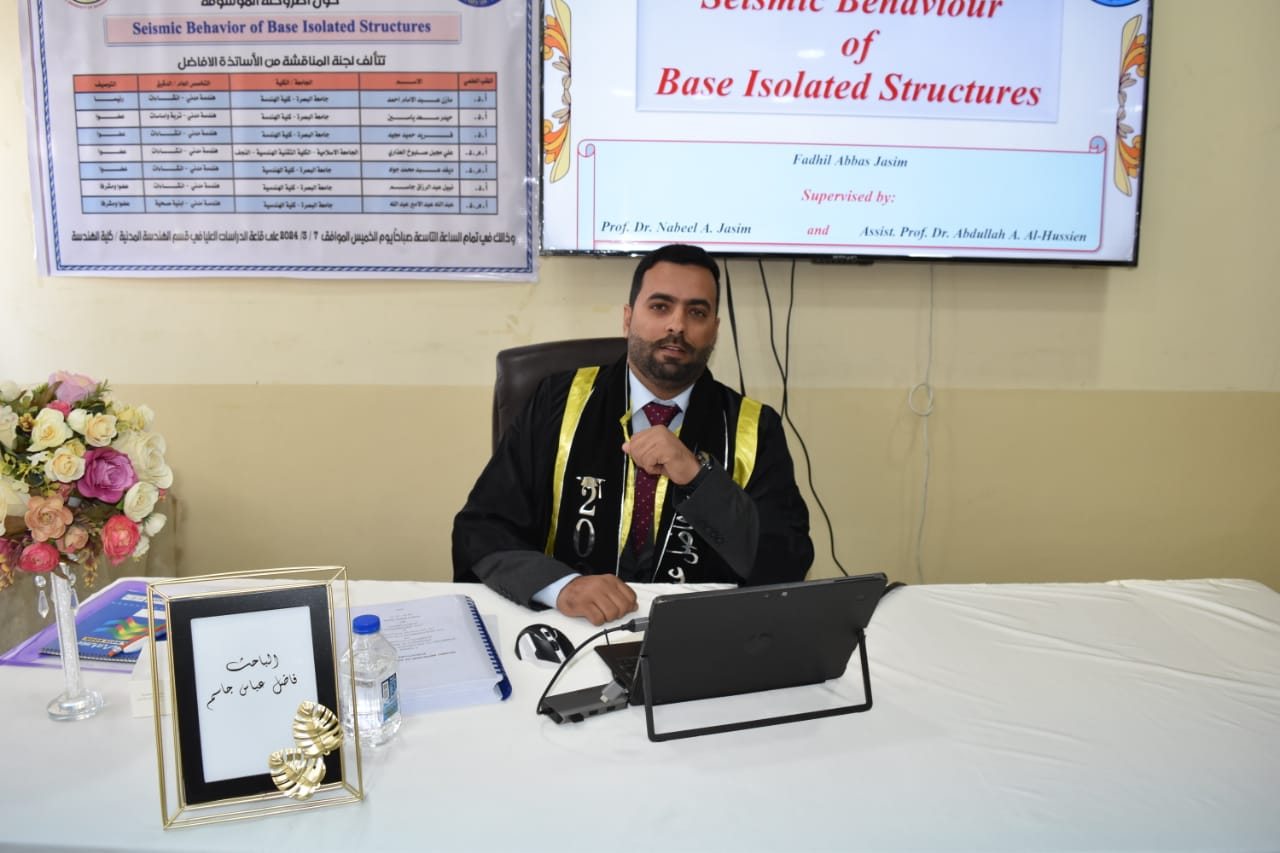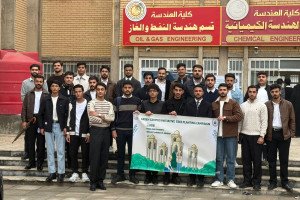A doctoral thesis by student Fadel Abbas Jassim was discussed at the University of Basra, College of Engineering, Department of Civil Engineering, entitled Seismic Behavior of Basic Insulated Structures. The thesis included: Earthquakes, which are the sudden shaking of the ground resulting from the movement of the Earth’s tectonic plates, pose potential risks to people and facilities. Using a system to control these risks is important to maintain people’s safety and reduce the impact of earthquakes on facilities. This study investigates the effectiveness of mass insulators and dampers in reducing seismic risks to buildings. The response of reinforced concrete buildings to seismic activity was studied in the case of the presence and absence of insulators at the base and in the case of the presence of mass dampers (TMD) at the roof of the building. Buildings of 4, 6, 8, 10, 12, 15, 20, 25, 30, 35 and 40 floors under the influence of earthquakes were studied (Pam, İzmit, Badra, Kobe, El Centro and Northridge). The SAP2000 program was used to model and analyze the studied cases, where three different types of insulation systems were studied: high-damping rubber insulation (HDRB), lead-reinforced rubber insulation (LRB), and double sliding pendulum (DSP).
The results showed that all foundation isolation systems are effective in reducing base shear and storey drift, with or without taking SSI into account. HDRB and LRB give the same efficiency while DSP efficiency is related to the applied vertical load. It was found that all insulation systems lead to an increase in the value of the basic period (T) of a 6-storey building by about 387% of the value of (T) for fixed foundations.

.jpg)







